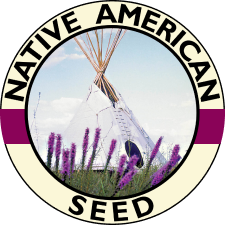This large spreading perennial vine is a close relative of many cultivated gourd crops. The ripe fruit forms a small gourd, which was reportedly boiled and eaten by various Indian tribes.
The Natives are Friendly by Znobia Wootan and Bill Neiman
The first cold snap of autumn fills the air with hopes of change. Walking along a country path, beautiful native grasses and leaves are easily noted, but don't over look low growing vines at your feet. Buffalo gourd is available for the many needs of the minds of the curious. Buffalo gourd (cucurbita foetidissima) is a perennial that grows from a large tuberous root, A.K.A. stinking gourd or fetid gourd.
This large vine can be found in the Southwestern US and Northern Mexico growing along roadsides, in corrals and fence lines and disturbed areas usually in sandy or gravelly soil. The immature 2-4 inch spherical fruit is green at first, and then turns lighter green with stripes. When mature she turns a light tan or yellowish color. A basketful can make a delightful decorative addition for a fall display. Last year, a thoughtful friend gave me a dried gourd for Christmas. This was a special gourd that he had etched scrimshaw style. The outlines of the continents were scribed dark brown into the hard, woody, straw-colored shell along with some words which read something like: we only have one planet and you hold its fate in your hands. This fruit, which is squash/melon related, I have heard, was used as food source by those who lived here before us though I can't imagine how they ever overcame the bitterness or the strong odor. When harvesting, be aware of the foul-smelling odor that occurs when the leaves are crushed. You don't really have to crush them; just walk through a patch to see for yourself. The plant itself is a vine with bluish gray leaves and the stems can grow from 5-25 ft.
It produces yellow-orange squash-blossom flowers that are large and showy from May-Sept. Many various types of bees visit the blossoms. Native Americans attributed mystical and medicinal powers to the root. The carrot like tap-root can grow from 4-6 ft long and weigh up to 100 pounds. I hit the top of an ancient one last spring while pulling a root plow in the farm fields and it was like no carrot I had ever seen. This was the largest mass of root of any plant I have ever seen, excepting roots below a tree trunk. And yes, there was some kind of magical feeling of power when holding the huge chunk of broken root in the palms of my two hands. I think the sense of mystic power was coming from part of the root which was still deep, deep in the dark depths of the mother earth.











